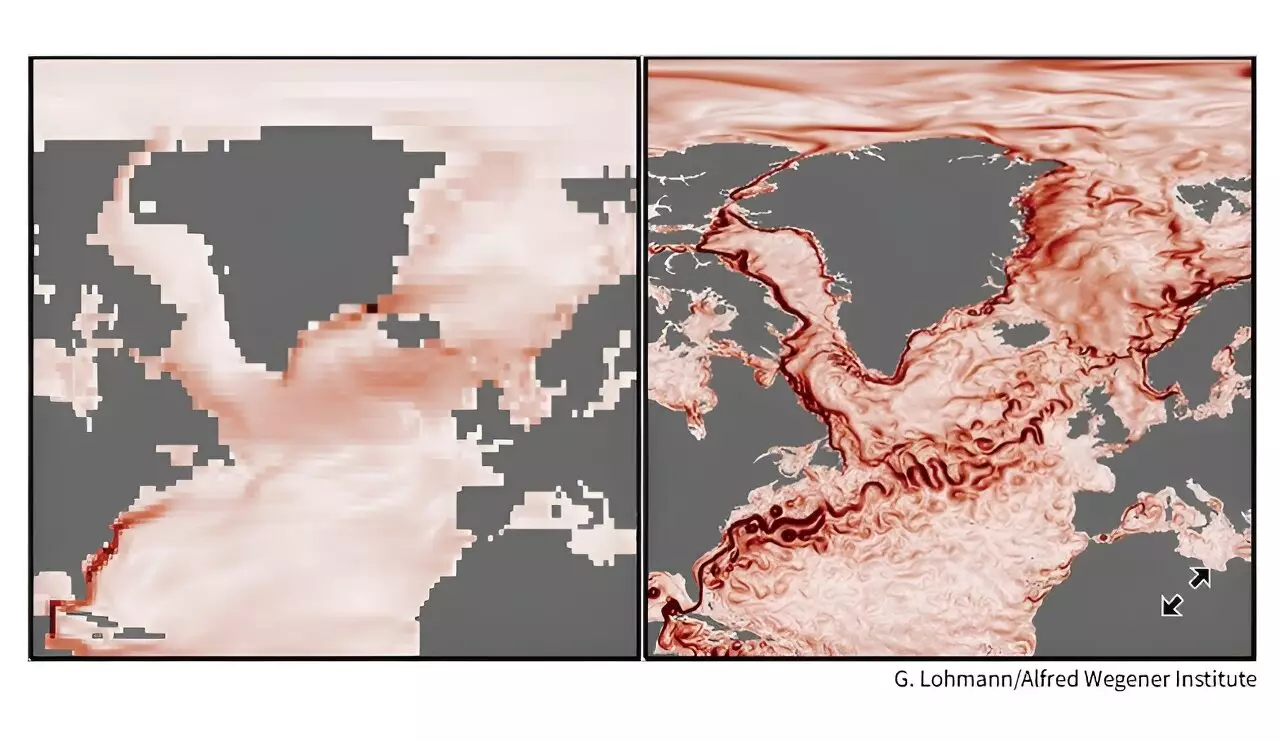Northern Europe has long been known for its relatively warm climate compared to other regions in similar latitudes. However, this could drastically change in the near future due to the effects of global warming. The Atlantic Meridional Ocean Current (AMOC), which plays a crucial role in moderating the climate of northern Europe, is at risk of collapsing. The AMOC carries warm water from the Gulf of Mexico northward, keeping European ports ice-free. However, with the melting Arctic ice and increased rainfall caused by global warming, the AMOC’s flow is being disrupted, leading to potential changes in the climate of northern Europe.
Recent studies have delved deeper into the future of the AMOC using a high-resolution climate model known as the Community Earth System Model. This model provides a more detailed look at the intricacies of the AMOC and its potential changes under high levels of carbon dioxide in the atmosphere. Contrary to previous beliefs that the AMOC would uniformly weaken, the new model suggests that the circulation could strengthen in certain regions, defying expectations. The study, published in the journal Physical Review Letters, highlights the importance of understanding the complexities of the AMOC and its potential impacts on the climate of northern Europe.
One of the key findings of the study is the presence of regional variations in the AMOC that were previously unknown. While the overall trend shows a slowdown in the circulation of the AMOC, there are regions where the current could collapse abruptly, while others might experience strengthening over time. These regional variations could have significant impacts on the climate and marine ecosystems of northern Europe, emphasizing the need to incorporate regional dynamics into future climate forecasts. The study also highlights the existence of tipping points in the AMOC, where small changes could lead to sudden transitions to new states, further complicating predictions of the current’s behavior.
As scientists continue to refine climate models, it is becoming increasingly clear that the interactions between different components of the climate system are more complex than previously thought. The feedback between the overall AMOC and its regional variations could change in the future, leading to unforeseen consequences for the climate of northern Europe. It is essential to advance climate models to anticipate and respond to these dramatic changes in the planet’s systems, in order to better prepare for the uncertain climatic future that lies ahead.
The future of Northern Europe’s climate is uncertain, with the potential collapse of the AMOC posing significant challenges for the region. By incorporating the latest research and high-resolution climate models, scientists are gaining a better understanding of the complexities of the AMOC and its potential impacts on the climate of northern Europe. It is crucial to continue monitoring and studying the AMOC to develop more accurate forecasts and mitigation strategies for the changing climate in the region.



Leave a Reply